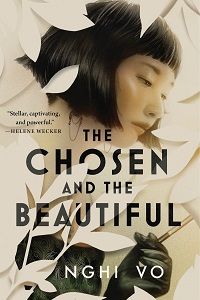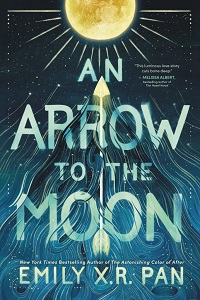Voice to Books: Magical Realism and BIPOC Authors

Magical realism is often associated with the works of Latin-American authors such as Gabriel García Márquez, Isabel Allende, and Jorge Luis Borges. However, in an essay for the New York Times titled “Saying Goodbye to Magical Realism,” Silvia Moreno-Garcia describes how the term can be problematic and limiting, not just for Latin-American authors, but for writers as a whole.
By mislabeling works as magical realism, she says, we lose our chance at having more “nuanced, complex conversations about books”—e.g., how stories might fit within multiple genres, moods, aesthetics, and textures beyond easily marketable categories that unintentionally strip them of their nuance in the name of a making a profit. Though Moreno-Garcia wants to do away with the term, magical realism as a genre itself does not appear to be the problem. Rather, it is how critics, publishers, and gatekeepers wield the term to shut out BIPOC authors and others from being a part of the larger conversation.
In this issue of Voice to Books, we feature four works—three of which appear to fit the traditional parameters of magical realism and one that might not, despite a striking resemblance. From reinventive retellings to haunting prose and plotlines, all of these works reclaim and expand what we know about fiction, genre, and storytelling, regardless of their adherence to specific genre conventions. In their own ways, they show us that labels are neither the end nor the beginning of what we know.

The Chosen and the Beautiful
By Nghi Vo
Reviewed by Diana Love
Nghi Vo’s The Chosen and the Beautiful is a vibrant take on an American classic. This reinterpretation of F. Scott Fitzgerald’s The Great Gatsby is in meaningful conversation with that original work, with several notable changes that deepen and further the explorations of identity and societal conflict found in the original.
Here, magic is real. Demon’s blood grants abilities, freshens faces, and powers heady illegal cocktails. Some of the rich and powerful bear blackened fingernails, signaling deals made with devils, while daring young things of the fashionable set copy with polish. Much of the magic here is centered around demons, the dead, and the underworld, feeling ultimately too cohesive to classify as true magical realism. There is also, notably, a completely separate second magic discovered by the narrator over the course of the novel, with its own distinct rules and possibilities. Neither, to me, felt to have the unlimited flexibility of magical realism. Each was bound by rules and specific parameters.
Nick Carroway – ostensible outsider – no longer narrates. Instead, our lead becomes Jordan Baker, ostensible insider and Daisy’s childhood companion. Something of a cipher in the original text, Vo’s portrayal of Jordan here is nuanced and captivating, a complex narrator navigating a shifting world and yearning for a sense of belonging. A queer Vietnamese adoptee ensconced in an old money family, Jordan is both an established part of Daisy’s world and a marked other, keenly aware of her uncertain place in an American society rife with class and racial stratification.
Vo masterfully grafts a much larger world onto the main events of the original novel, creating something uniquely original. Written a hundred years post-Gatsby, Vo’s additions feel well researched and informed, touching on issues of race, class, and gender true to the time period and also timely today. Like a key played in a complementary chord, this reimagining furthers the exploration of class and social standing in the original novel with a fresh focus on intersectional issues of race and gender. It is an approach suggesting love and deep understanding for Gatsby, while at the same time bringing new ideas and perspectives to the work.

An Arrow to the Moon
By Emily X. R. Pan
Reviewed by Luree Scott
An Arrow to the Moon by Emily X.R. Pan feels both contemporary and ancient, illuminating through magic and mythology how family struggles and romance are both old as time, yet ever-changing.
Set in the 1990s, highschoolers Luna Chang and Hunter Yee must figure out why the universe has been drawing them closer, even though their families—both made up of Taiwanese immigrants with conflicting ideas about their cultural identities—want to keep them apart. Heavily inspired by the mythic romance of Chang’e and Houyi—the Chinese gods of the moon and archery, respectively—this story is one of bittersweet emotions and intense desire. It’s also laden with themes of generational trauma and the embittering ideals of the “American dream.” For instance, the fathers of each family are competing for the same position at the local college, putting them in direct conflict to each other’s aspirations.
Pan accomplishes this tricky mix of expectation and affection by giving us at least one chapter in the close-third perspective for all main characters. We don’t just hear from the protagonists, but their parents and siblings, too. Longings for love, money, promotions, and college acceptances all clash together, allowing Pan to fully embrace some romance tropes while still providing a unique tone. The myth provides basic structure and magical elements, but the pure emotion Pan pours into the interiority of each character is what sets the novel apart.
This story is a true blend of magic and realism, with relatable characters navigating a world with magical lightning bugs, omnipotent rabbits, and arrows that never seem to miss their mark. When an earthquake creates huge cracks in the ground the moment Luna and Hunter first touch, we know they are cosmically connected. Pan uses this magic to reveal something true about us. Though our circumstances—familial, cultural, or political—often try to dictate how we love, this does not have to keep us from following our hearts.

Eartheater
By Dolores Reyes
Translated by Julia Sanches
Reviewed by Karen A. Parker
According to The Washington Post, Argentina recorded more than 250 femicides in 2020, one every 35 hours. In the first months of 2021, the advocacy group Mumalá registered at least 118 femicides. Set in a violent barrio of Buenos Aires and invoking these tragic statistics, Eartheater is a beautifully rendered dedication to the victims and an ongoing battle cry.
The novel follows a nameless woman known only by her titular designation of “Eartheater,” given to her by the vision of her murdered school teacher, Señorita Ana. As a child, she takes a handful of the earth to eat and has visions of her mother’s brutal death at her father’s hands. Her aunt, mentioned only as Tía, takes her in, along with her brother, Walter, but Tía abandons them both when Eartheater draws Señorita Ana’s naked body “tied to the posts of an open warehouse.” Afterward, she and Walter live on their own, but Eartheater’s reputation for finding the dead through her visions spreads, drawing her deeper into the violence and that plagues her world.
Eartheater is as much a mournful, moving novel about grief, rage, and femicide as it is about poverty, coming-of-age, and what it means to live in a violent world. Its prose is gritty, bare, and authentic. On occasion, the sentences lengthen and hint at hope for the protagonist, but more often than not, they stay close to the dark, literary ground on which the novel walks.
Reyes places emphasis on the realism of the violence rather than the magic of earth-eating, as expected of the magical realism genre. There is only one mention of palm reading and only one scene in which the protagonist is declared a bruja. Because of these bare hints of cultural context, we witness the turbulent growth of an empathic, deeply spiritual woman. To question her power or sanity, on the other hand, would be a means of dismissing her experience. In conveying Eartheater’s story, the novel declares that the earth will make humanity answer for its injustices through the visions and voices of its nameless women.

Gone Like Yesterday
By Janelle M. Williams
Reviewed by Maxamina Muro
Magical realism flies through the pages of Gone Like Yesterday, by Janelle M. Williams, in the form of moths that deliver mostly oldies songs that are akin to a personal soundtrack for thirty-something Zahra. The moths are juxtaposed to the portrayal of Zahra’s daily life in Harlem, full of realistic details like bodegas and familiar neighborhood paths.
In an adulthood not reflective of the achievements of a Stanford grad, Zahra ekes out a hand-to-mouth existence slinging coffee and helping high school students write college entry essays. She left her deep-south roots for Palo Alto, where she felt alienated and inadequate due to class inequality and an environment highlighting racial disparity. But her struggle to connect with people in Harlem later, and the near-constant presence of singing moths only she can see, point to another possible culprit.
Moths are the nighttime, plain-Jane cousins of butterflies that represent transformation and shadows. Their ubiquity extends to anywhere Zahra may roam. Williams’ use of the moth represents spiritual life and ancestral guidance, and the meaning of the moths is seamlessly woven throughout the plot. Their appearance is never explained in a forthright way and is consistent with intrapersonal communication throughout Atlanta, where the story takes Zahra and one of her students when Zahra’s brother goes missing. Zahra discovers that others in her family can see the moths and comes to realize how essential they are in navigating life, if only she will listen closer to their message.
Williams’s story evokes a strong sense of history, self-revelation, and how the legacy of every individual is integral to the continuation of all that is to come. Williams argues that in a world quick to label us, relegate us, and judge us before we’ve even completely formed, we should stay close to people with whom we share history, interests, and a mutual desire for wellbeing. Most important, we must cast aside our preconceived notions if we intend to become who we are meant to be.

Voice to Books is a periodical short list of reviews from a variety of voices, created by Daniela Z. Montes and A.E. Santana, and edited by Karen A. Parker.
Karen A. Parker is a Black, bi, nonbinary Secular Buddhist from Los Angeles, California. Now attending UC Riverside-Palm Desert’s MFA program, they hope to research Esoteric Buddhism, oral storytelling tradition, and Black liberation for their second-world fantasy novel, which will serve as their literary and academic thesis. When they’re not writing, they enjoy cooking, cartomancy, composing music, critting in Dungeons & Dragons, and completing their video game collection.
